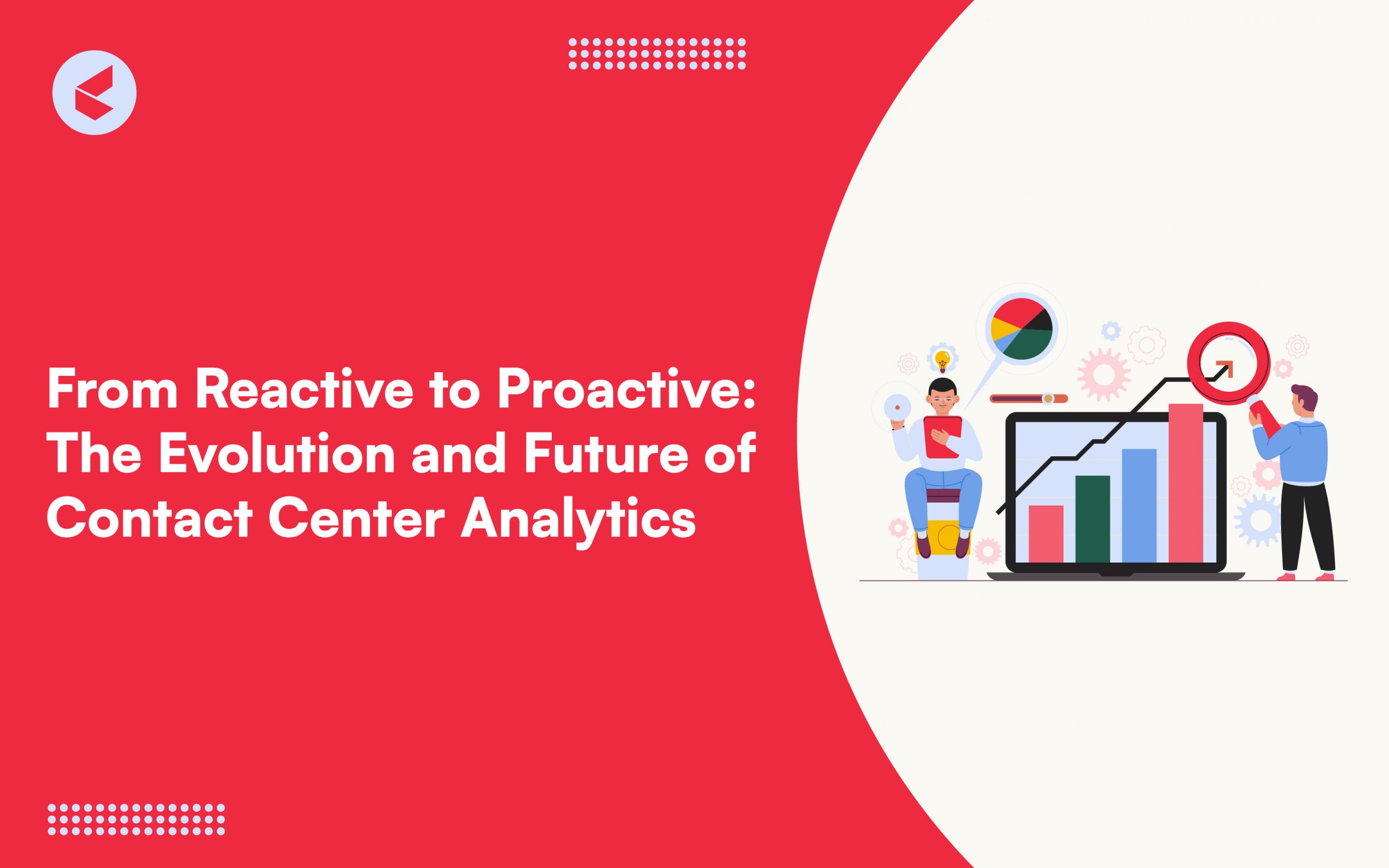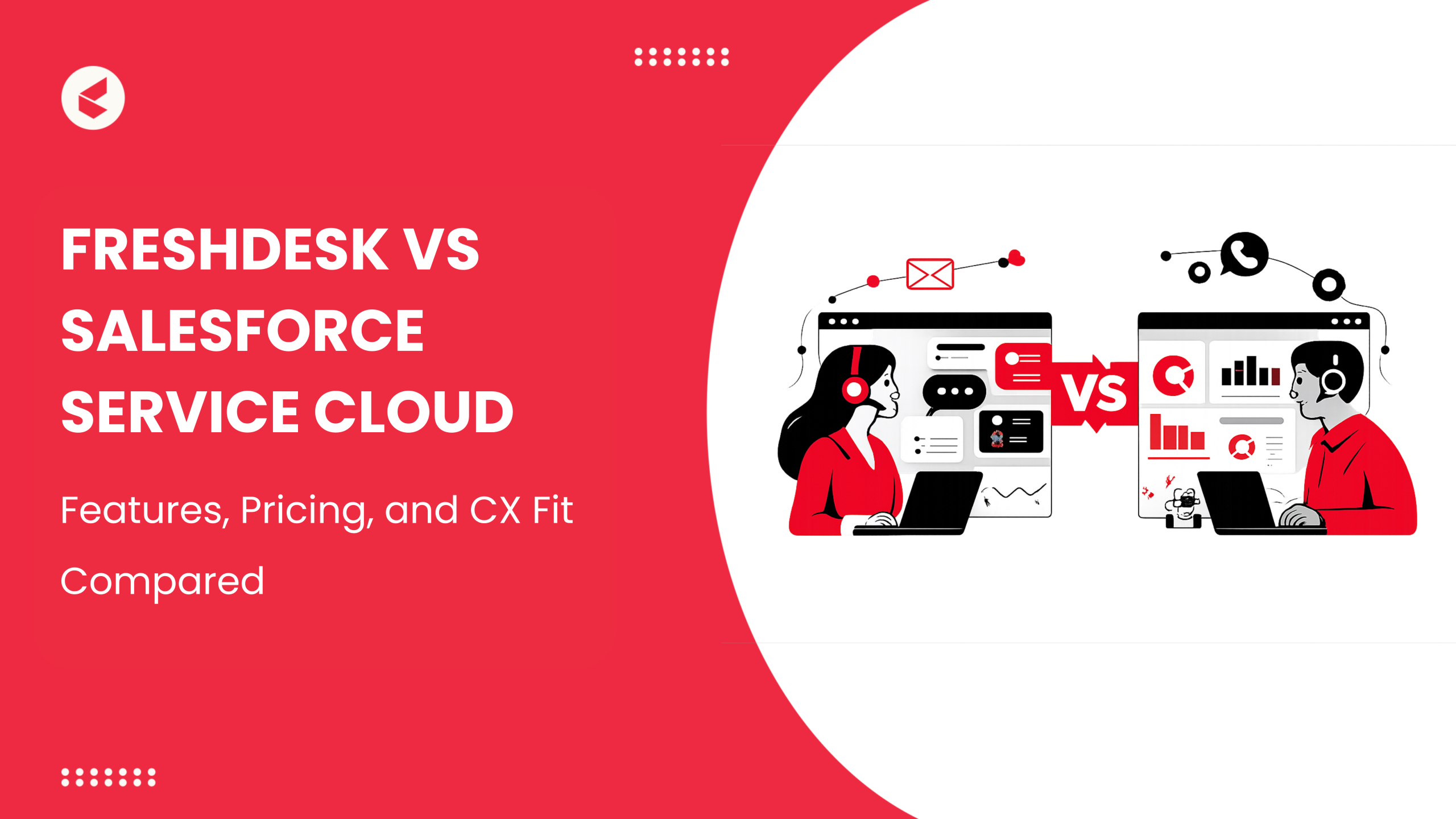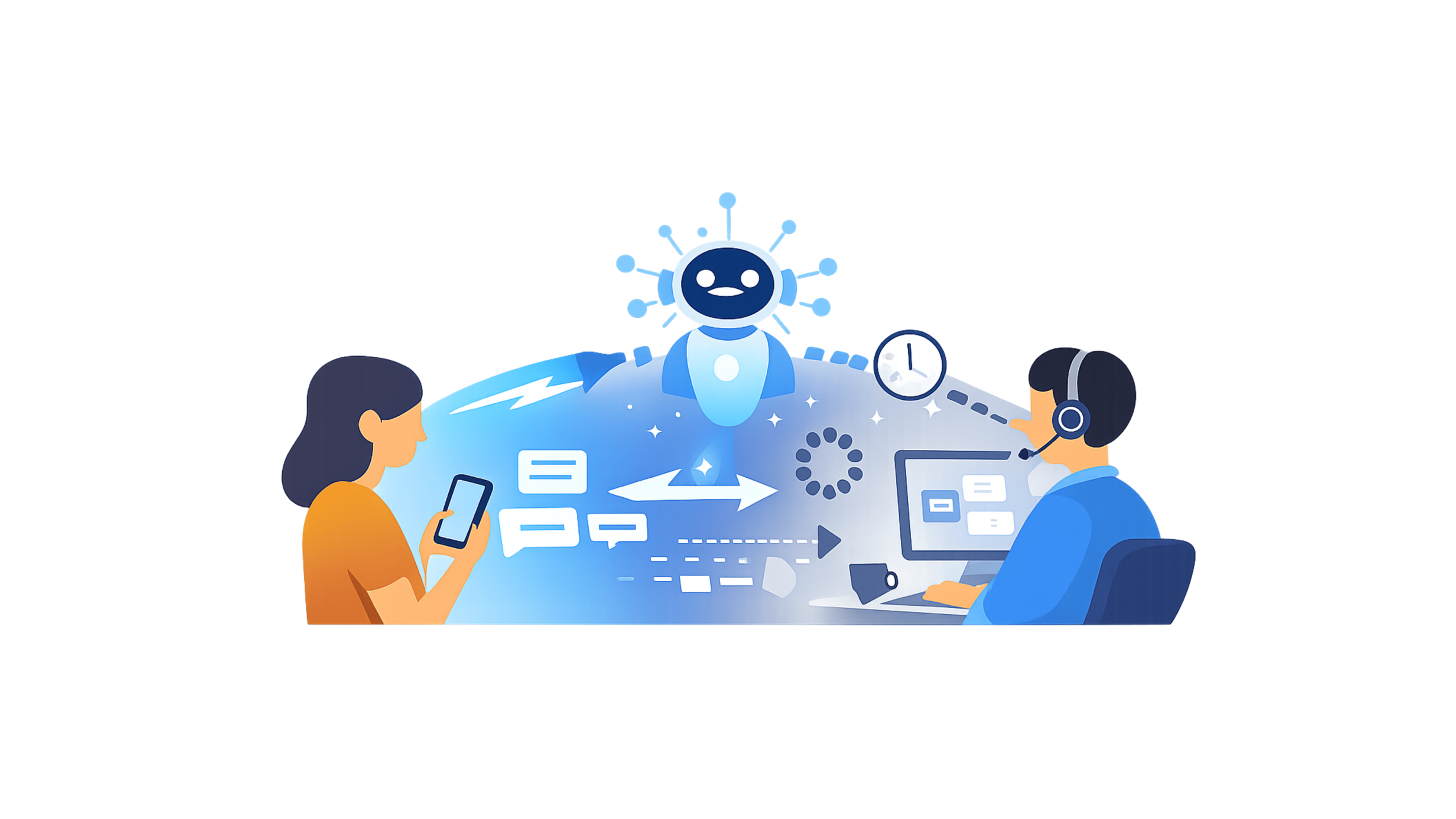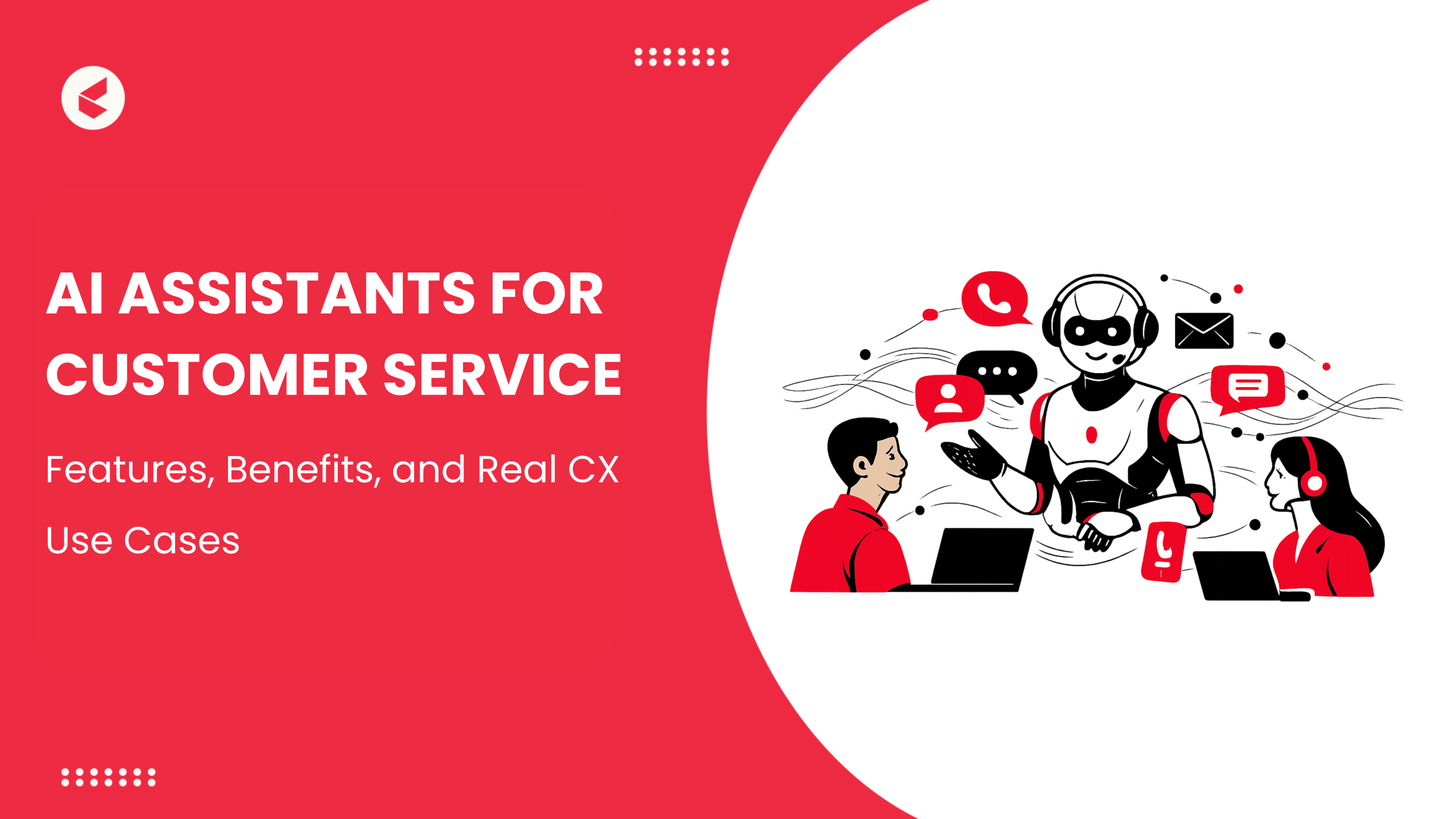How can your company know what is working and not working in the contact center? Quality customer service directly impacts business success. According to Statista, a customer who experienced good service from the business is going to buy from them again. To consistently deliver excellent service, companies need accurate data to make informed decisions about their customer support operations. This customer-related data helps optimize staffing levels, resource allocation, and overall efficiency in contact centers.
However, contact centers face a significant challenge: managing vast amounts of customer interaction data from multiple channels including calls, chats, emails, and social media messages. This data contains valuable insights about customer preferences, common issues, and service quality metrics.
Contact center analytics, also known as Key Performance Indicator (KPI) tracking, provides organizations with clean, organized data that reveals meaningful customer and operational insights. These tools help monitor agent performance, track customer satisfaction, and enhance overall customer experience (CX).
The growing emphasis on data-driven decision-making has increased the demand for analytics in contact centers. Organizations see tangible benefits like improved service quality and better performance monitoring. This expanding adoption reflects in market research, which shows the global contact center analytics sector experiencing steady growth. Industry analysis projects an 11.7% CAGR between 2022 and 2027, with the market expected to reach $2.9 billion. This growth demonstrates how businesses increasingly recognize analytics as essential for improving customer service operations.
What is Contact Center Analytics?
Contact center analytics involves the systematic collection, analysis, and interpretation of KPIs and data generated from the customer’s interaction in the contact center. Several key metrics help measure contact center performance.
First Call Resolution (FCR) measures how often customer issues are resolved in their first contact with support. Average Handle Time (AHT) tracks how long agents spend handling customer interactions, including the actual conversation and any follow-up work. These and other KPIs provide valuable insights into customer needs and operational efficiency.
Turning Data into Results
Modern customers interact with businesses through multiple channels. They might start with a chat, follow up via email, and finally call for resolution. Omnichannel analytics combines data from all these interaction points into a single, comprehensive view. This unified approach helps contact centers understand the complete customer journey and measure overall service performance across all communication channels.
At its core, contact center analytics transforms raw data like customer interaction into insights. For example, analytics can track frequently asked questions to uncover trends in customer inquiries. Analytics tools use sophisticated pattern recognition to process customer interactions. For frequently asked questions, the system analyzes conversation transcripts to identify common topics and their frequency.
When examining service issues, it looks for repeated keywords or phrases in customer complaints. For productivity analysis, it tracks metrics like call duration and resolution rates, comparing them against established benchmarks. This detailed analysis helps identify bottlenecks and areas needing improvement.
Organizations can also optimize resource utilization, enhance agent training initiatives, and increase customer satisfaction while reducing operational expenses. Predictive analytics refers to the use of AI and machine learning to analyze historical data and predict future trends or outcomes. This helps businesses anticipate customer needs, such as forecasting call volumes or identifying customers at risk of leaving (churn).
By using predictive analytics, companies can make proactive decisions to improve operations and deliver a more consistent, data-driven customer experience, leading to higher Net Promoter Scores (NPS) and Customer Satisfaction Scores (CSAT).
Despite its huge potential, data integration, privacy concerns, and resource constraints are obstacles that often deter the implementation of such systems. These challenges can be overcome when there are clear objectives, proper data practices, and robust technological frameworks.
Contact center analytics solutions empower businesses to elevate customer support operations, turning them into strategic assets that drive customer loyalty, foster stronger relationships, and fuel sustainable growth.
Benefits of Contact Center Analytics
With its many advantages that improve customer satisfaction and operational efficiency, contact center analytics has completely changed how companies handle customer support. Businesses can obtain profound insights into their agent performance and customer satisfaction by utilizing data from client interactions, which opens up possibilities for growth and optimization. A closer look at the main advantages of using contact center analytics is provided below:
1. Happier Customers, Better Loyalty
When customers are happy, they’re more likely to stay loyal to your brand – no need to make it harder than that. Contact center analytics solutions enable businesses to get a clearer view of what customers want and improve services that don’t just meet but exceed their expectations. Here’s how:
- Tailored Service
Agents are able to respond appropriately by knowing a customer’s history and preferences.
- Addressing Issues Before They Arise
Predictive analytics can help flag issues early so support teams can proactively resolve the issue rather than waiting for complaints to flow in.
A PwC study shows that 32% of customers will stop doing business with a brand they love after only one bad experience. Analytics minimizes this risk by providing insights that enhance every touchpoint.
2. Enhancing Agent Performance
Agents are the face of your contact center, and their performance is what makes or breaks the customer experience. With the right tools, analytics helps support agents by highlighting specific areas for improvement, like reducing call times or increasing first-call resolutions. It also enables you to offer real-time feedback, so agents can adjust their approach during live calls.
Recognizing top performers based on data can help build morale and keep teams motivated, which directly impacts their performance. When agents feel supported and confident, it shows in their interactions. And that confidence directly impacts how customers perceive your brand.
3. Lower Costs Without Cutting Corners
Running a contact center is expensive, but analytics can help optimize costs without sacrificing quality. For example:
- Workforce Planning
Predictive insights ensure that staffing levels match call volumes, reducing the risk of overstaffing or under-preparation.
- Faster Resolutions
Deliver relevant data to agents in real time, equipping them with the information they need to resolve issues quickly and efficiently. By providing context-specific insights during calls, agents can address customer concerns faster, saving both time and resources.
- Automation Opportunities
Routine tasks, such as answering frequently asked questions, can be automated using tools like chatbots and self-service platforms. These solutions streamline operations, allowing your team to focus on more complex issues while maintaining high customer satisfaction. By adopting smart automation, businesses can operate efficiently without compromising on customer expectations.
4. Speed that Keeps up with The Pace
Contact center analytics has the ability to give real-time insights. You no longer have to wait and refer to old reports, instead, you can make decisions that are based on what’s happening right now. Analytical tools provide you with live dashboards, which highlight spikes in call volume, shifting customer sentiment, or unbalanced agent workload.
These trends allow you and your team to spot the anomalies early and adjust your strategy accordingly. Whether it is reallocating agents during a busy period or reacting to a spike in negative sentiment, with real-time data you can make on-the-fly adjustments. Analytics provides the agility required to live up to customer expectations.
5. Feeding the Bigger Business Strategy
Contact center analytics is a tool that feeds into a much broader business strategy. It helps companies use recurrent feedback from customer interactions to enhance the design of products. This also enables them to refine their marketing campaigns to hit the desired audience behaviors.
Analytics can help companies strengthen alignment between the customer service and sales teams to ensure seamless customer journey. Overall, it helps companies be more cohesive, using data to move smarter and faster than the competition.
Key Metrics in Contact Center Analytics
Tracking key metrics is very important to improve customer satisfaction and overall operational efficiency. Some of the key metrics that should be tracked in contact center analytics are as follows:
1. First Call Resolution (FCR)
The FCR is a measure of the percentage of customer queries that are resolved during the first interaction.
FCR = (Issues Resolved on First CallTotal Number of Calls) 100
A high FCR is essential because it minimizes repeat calls, which saves both customer and agent time. It also directly impacts customer satisfaction, as customers value quick and efficient resolutions. Businesses with higher FCR rates typically see improved customer loyalty and reduced operational costs.
2. Average Handle Time (AHT)
AHT tracks the average duration agents spend on a single customer interaction, including hold time and after-call work.
AHT = Total Time Spent on Calls (including hold and after-call)Total Number of Calls
While minimizing AHT reduces operational costs, it’s equally important to maintain quality and ensure queries are resolved effectively. Balancing speed with customer satisfaction is key to success.
3. Customer Satisfaction (CSAT)
CSAT is a direct measure of how satisfied customers are with their experience. It’s usually collected through post-interaction surveys where customers rate their experience on a scale (e.g., 1-5 or 1-10).
CSAT = Number of Positive ResponsesTotal Responses100
CSAT is a direct indicator of service quality. Identifying areas with lower scores helps teams address specific issues, improving customer happiness and loyalty.
4. Net Promoter Score (NPS)
NPS measures how likely customers are to recommend a company to others within their network, such as friends, family, or colleagues. Customers rate their likelihood on a scale of 0-10, and scores are categorized into Promoters (9-10), Passives (7-8), and Detractors (0-6).
NPS = %Promoters – %Detractors
NPS is a strong indicator of overall customer loyalty and brand advocacy. High scores often correlate with long-term growth and positive word-of-mouth referrals.
5. Call Abandonment Rate
This metric measures the percentage of customers who disconnect before speaking to an agent, often due to long wait times.
Call Abandonment Rate = (Abandoned CallsTotal Incoming Calls)100
High abandonment rates signal inefficiencies in the contact center, such as insufficient staffing or long hold times. Reducing abandonment rates leads to improved customer satisfaction and retention.
How Contact Center Analytics Works?
Contact center analytics takes all the daily customer interaction data and converts it into actionable insights to drive better decision-making and improved customer experiences. There are four key stages involved in this process, each of which plays a vital role in optimizing operations and understanding customer needs.
1. Data Collection
The process begins by collecting information from all customer interaction channels: calls, emails, chats, and social media. Modern tools ensure no touchpoint is overlooked, creating a rich dataset for analysis. To enhance this process, Google Scraper helps gather public data from websites and social platforms, supplementing the contact center dataset with additional insights on customer behavior and trends.
2. Data Integration
The dispersed data is collected into a singular platform. By bringing the interactions from multiple channels to one single place, the business gets a 360-degree view of the customer journey. This is essential for uncovering patterns that remain hidden when data is fragmented across silos.
3. Advanced Analysis
Analytics applications automatically use AI and machine learning to analyze data, unearth trends, assess customer sentiment, and capture operational bottlenecks in the process. For example, sentiment analysis focuses on identifying customer emotions, such as frustration or satisfaction, based on the tone or language used during interactions. On the other hand, trend detection analyzes recurring patterns over time, such as repeated complaints about a specific product or service issue.
4. Actionable Insight
Finally, the results are translated into concrete, actionable insights. Dashboards and visual reports make it easy for managers to act on these insights – be it optimizing staffing levels, improving agent training, or redesigning workflows to improve first-call resolution (FCR).
By converting raw data into clear strategies, contact center analytics enables enterprises to deliver faster, more personalized support while continuously improving their operations. It’s not just about solving today’s problems—it’s about building a smarter, more proactive customer experience for tomorrow.
Analytics can identify customer issues, and provide suggestions to improve the agent’s performance, which, in turn, could hasten resolution and boost customer and employee satisfaction levels. Organizations can move beyond guesswork by making decisions grounded in precise, real-time data, exactly when it’s needed.
Contact Center Analytics Tools and Technologies
To fully unlock the power of analytics, organizations need the right tools to collect, process, and analyze customer data effectively. These tools enable businesses to derive actionable insights, streamline operations, and deliver superior customer experiences.
1. Speech and Text Analytics Tools
NICE and Verint are tools that specialize in voice and text interaction capture and analysis, thus providing more profound insights.
2. CX System Integration
The integration of analytics with CX systems ensures a holistic view of customer data, thereby allowing for personalized service.
3. Real-Time Monitoring Tools
Real-time monitoring tools like LiveAgent provide instant feedback, helping contact centers address issues as they arise.
4. Workforce Management (WFM) Software
Assists in forecasting, scheduling, and monitoring agent performance to ensure optimal staffing levels.
5. Predictive Analytics Solutions
Predictive analytics tools, such as Genesys, help forecast customer behavior, enabling proactive problem-solving.
Challenges in Implementing Contact Center Analytics
In essence, the benefits of contact center analytics are enormous, but establishing it is not a trivial task. Here are a few of the common concerns:
1. Data silos
Analytics are always hindered by silos of data spread over the multi-systems. Without proper data integration, meaningful insights cannot be derived.
2. High implementation costs
However immense the benefits are, creating such advanced analytics solutions can be expensive, primarily if it is for a small-medium enterprise.
3. Resistance to change
Adopting analytics requires a cultural shift, where employees and management are aligned on the value of data-driven decision-making.
4. Data Privacy Concerns
Handling sensitive customer data comes with significant responsibilities. Businesses must ensure compliance with regulations like GDPR and CCPA.
Best Practices for Leveraging Contact Center Analytics
While contact center analytics solutions provide numerous benefits, it’s important to leverage them effectively. Here are some of the best practices that you can follow:
1. Clear Objectives
Define specific goals, such as improving FCR or reducing AHT, to measure the success of analytics initiatives. These objectives directly impact business outcomes by enhancing customer satisfaction, increasing operational efficiency, and reducing costs, ultimately driving better performance and growth.
2. Employee Training
Train agents and managers to understand and act on analytics insights effectively. As analytics insights evolve over time, ongoing training is essential to ensure teams can adapt to new tools, trends, and customer expectations. Regular skill updates empower employees to maximize the potential of analytics, improve decision-making, and deliver consistently exceptional service.
3. AI and Automation
AI-powered tools not only automate routine tasks but also deliver personalized insights by analyzing customer behavior and preferences. This allows agents to tailor their responses, improving customer satisfaction and increasing metrics like First Call Resolution (FCR) by resolving issues more efficiently during the first interaction.
4. Data Security
Invest in robust security measures to protect customer data and ensure compliance with regulations such as the General Data Protection Regulation (GDPR) and the California Consumer Privacy Act (CCPA). Adhering to these standards not only safeguards sensitive information but also fosters customer trust, as they are assured their data is handled responsibly. Implementing encryption, access controls, and regular audits further strengthens data security and compliance.
5. Monitor and Optimize Continuously
Review analytics reports regularly and adjust strategies to ensure continuous improvement.
The Future of Contact Center Analytics
The future of contact center analytics is more deeply integrated with AI, real-time analytics, and hyper-personalization. Predictive and prescriptive analytics will be the basis on which businesses will be ahead of their customers’ needs. Contact centers will evolve from just reacting to problems to preventing them, such as predicting a call surge or identifying recurring issues before they become bigger issues.
Real-time insights can be generated with live dashboards for real-time updates that enable a quick and informed decision on the part of the managers. AI-powered tools, such as chatbots and virtual assistants, provide faster and more personalized responses to common customer questions.
Natural Language Processing (NLP) is essential for understanding the context and intent behind customer communications, whether through voice or text. Paired with sentiment analysis, which identifies emotions such as frustration, satisfaction, or urgency, these technologies empower contact centers to respond in ways that are both accurate and empathetic. By leveraging NLP to decode customer intent and sentiment analysis to gauge emotional states, businesses can deliver tailored interactions that improve resolution times and enhance overall customer satisfaction.
Wrapping Up
Contact center analytics is essential for improving customer experiences and optimizing operations. By leveraging advanced tools and tracking meaningful KPIs, businesses can identify areas for improvement, streamline workflows, and enhance both efficiency and customer satisfaction. These insights empower organizations to make data-driven decisions that build trust, improve retention, and drive long-term growth.
With the right analytics solution, your contact center can become a powerful asset for your business. Kapture CX offers cutting-edge analytics tools designed to transform how you manage customer interactions and achieve measurable results. Take the next step toward superior customer service. Book a demo today and see how Kapture CX can elevate your contact center strategy.













